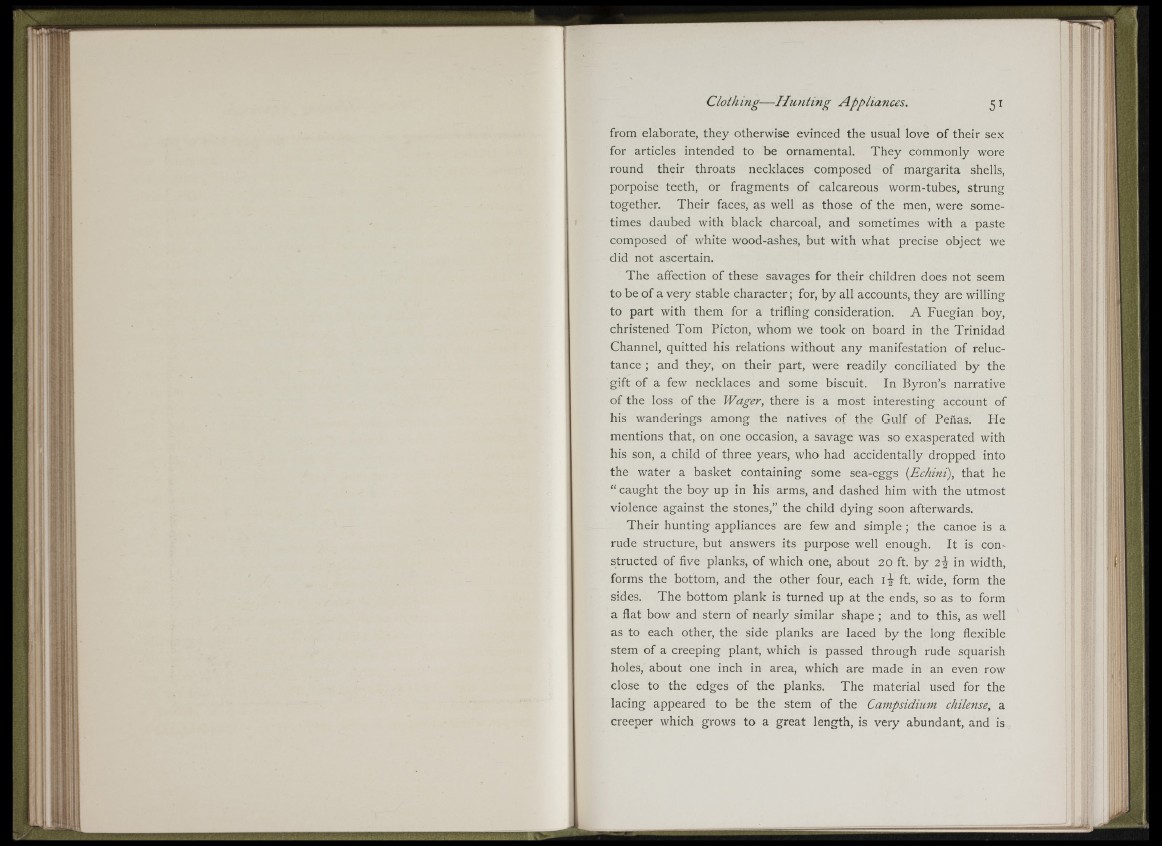
li: li'in
i;!'
m ' i i j i
: I 1 » « i i I
Cloth ing— Hu n ting Appliances. 5 1
from elaborate, they otherwise evinced the usual love of their sex
for articles intended to be ornamental. They commonly wore
round their throats necklaces composed of margarita shells,
porpoise teeth, or fragments of calcareous worm-tubes, strung
together. Their faces, as well as those of the men, were sometimes
daubed with black charcoal, and sometimes with a paste
composed of white wood-ashes, but with what precise object we
did not ascertain.
The affection of these savages for their children does not seem
to be of a very stable character; for, by all accounts, they are willing
to part with them for a trifling consideration. A Fuegian boy,
christened Tom Picton, whom we took on board in the Trinidad
Channel, quitted his relations without any manifestation of reluctance
; and they, on their part, were readily conciliated by the
gift of a few necklaces and some biscuit. In Byron’s narrative
of the loss of the Wager, there is a most interesting account of
his wanderings among the natives of the Gulf of Peñas. Pie
mentions that, on one occasion, a savage was so exasperated with
his son, a child of three years, who had accidentally dropped into
the water a basket containing some sea-eggs {Echini), that he
“ caught the boy up in his arms, and dashed him with the utmost
violence against the stones,” the child dying soon afterwards.
Their hunting appliances are few and simple ; the canoe is a
rude structure, but answers its purpose well enough. It is constructed
of five planks, of which one, about 20 ft. by 2\ in width,
forms the bottom, and the other four, each ft. wide, form the
sides. The bottom plank is turned up at the ends, so as to form
a flat bow and stern of nearly similar shape ; and to this, as well
as to each other, the side planks are laced by the long flexible
stem of a creeping plant, which is passed through rude squarish
holes, about one inch in area, which are made in an even row
close to the edges of the planks. The material used for the
lacing appeared to be the stem of the Campsidium chilense, a
creeper which grows to a great length, is very abundant, and is
[?S|!